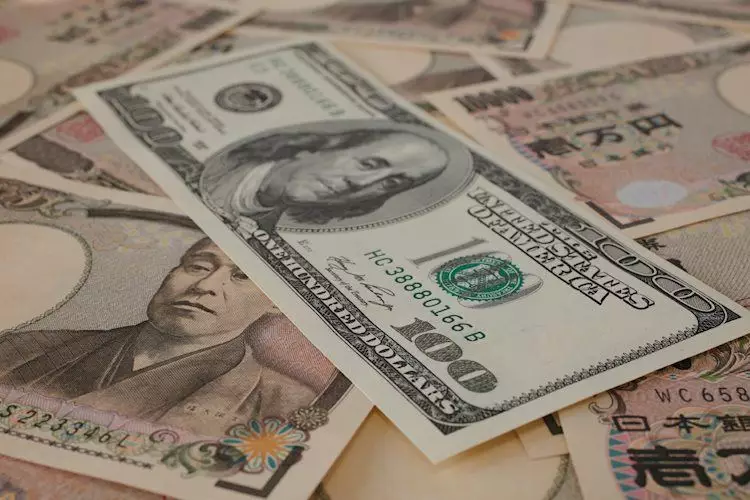In the latest trading sessions, the USD/JPY currency pair has experienced a notable softening, sliding to approximately 150.05 despite an overall stronger US dollar presence in the Asian trading scene. This development highlights a complex interaction between economic indicators, central bank policies, and investor sentiment. As participants in the financial markets look towards upcoming data releases, including US building permits and housing starts, the prevailing uncertainty adds layers to the current market dynamics.
While the US dollar seems robust, the muted reaction from the USD/JPY pair underscores a nuanced interplay of factors, warranting deeper analysis. Among these, the remarks from notable Federal Reserve members like Raphael Bostic, Neel Kashkari, and Christopher Waller—scheduled to speak later in the day—will likely shape market sentiment and investor strategies.
The recent statistics from Japan’s Statistics Bureau reveal a dip in the annual Consumer Price Index (CPI) inflation rate from 3.0% in August to 2.5% in September. This notable decline raises questions about the resilience of Japan’s inflationary trajectory and its implications for monetary policy. Additionally, the CPI excluding fresh food and energy climbed to 2.1%, while the CPI without fresh food rose by 2.4%, outpacing the consensus estimate of 2.3%. While these figures might suggest alleviating price pressures, their impact on the Bank of Japan’s (BoJ) policy approach might be restrained.
Governor Kazuo Ueda’s comments reflect a calibrated stance, stating that the BoJ intends to continue increasing rates as long as inflation aims towards the stable 2% target. The cautious approach considers global economic uncertainties, especially as Japan’s recovery remains precarious. This balancing act is crucial as the BoJ prepares to hold its benchmark rate steady on the upcoming October 31 meeting, reflecting a broader strategic assessment rather than hasty alterations in policy.
The Federal Reserve’s Calculated Moves
On the US side, economic indicators present a picture of resilience, notably highlighted by stronger-than-expected retail sales data for September. This growth suggests that the US economy is maintaining its momentum through the third quarter, which in turn puts a ceiling on any negative sentiment surrounding the dollar. The Federal Reserve appears cautiously optimistic, with discussions among its officials about potential rate cuts taking center stage.
Bostic’s hint at one more anticipated 25 basis point cut this year, alongside Kashkari’s view of “modest” reductions, suggests a careful recalibration of monetary policy is underway. Money markets are reflecting this sentiment with a 90% probability priced in for a rate cut next month. However, the underlying complexities of these decisions emphasize that they will be closely tethered to forthcoming economic data, reiterating the Fed’s commitment to a data-driven approach.
Understanding the Yen’s Role in Global Markets
The Japanese Yen is distinguished as one of the most traded currencies globally, its value intricately linked to Japan’s economic landscape and the Bank of Japan’s monetary strategies. The ongoing policy divergence between the Bank of Japan and other major central banks, especially the Federal Reserve, has been instrumental in shaping the Yen’s trajectory. Historically, Japan’s ultra-loose monetary policy, in effect from 2013 to 2024, led to a significant depreciation of the Yen as contra to other currencies, primarily driven by widening interest rate differentials.
Despite recent shifts towards normalizing monetary policy, the Yen’s resumption as a safe-haven investment remains relevant; it attracts inflows during periods of market volatility. Investors typically pivot towards the Yen when facing uncertainties in riskier assets, enhancing its standing as a reliable store of value.
Anticipating future trends requires careful observation of both domestic and international economic indicators. As the Bank of Japan considers its policy route against a backdrop of fluctuating global economic stability, the decisions made in the coming months will significantly impact the Yen’s value. Market participants will closely monitor geopolitical developments and shifts in economic data that could influence central bank decisions both in Japan and the US.
With the interplay of various factors—such as inflation rates, monetary policy decisions, and broader economic sentiment—investors should remain vigilant in assessing the nuances of the USD/JPY pair and the underlying economic realities shaping both the dollar and the yen. As the markets continuously adapt to these evolving narratives, a cautious and informed approach is key to navigating the complex landscape that lies ahead.

